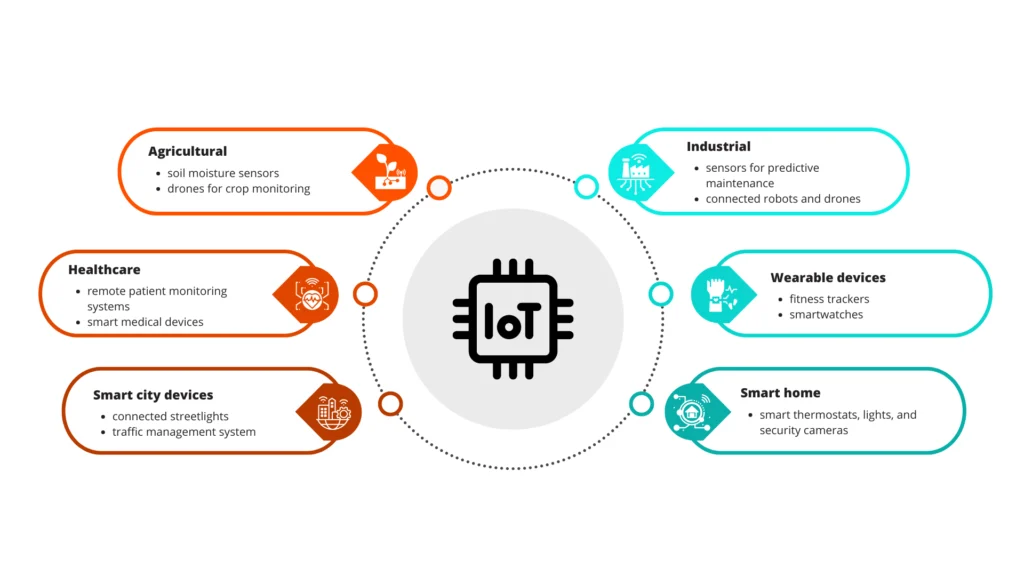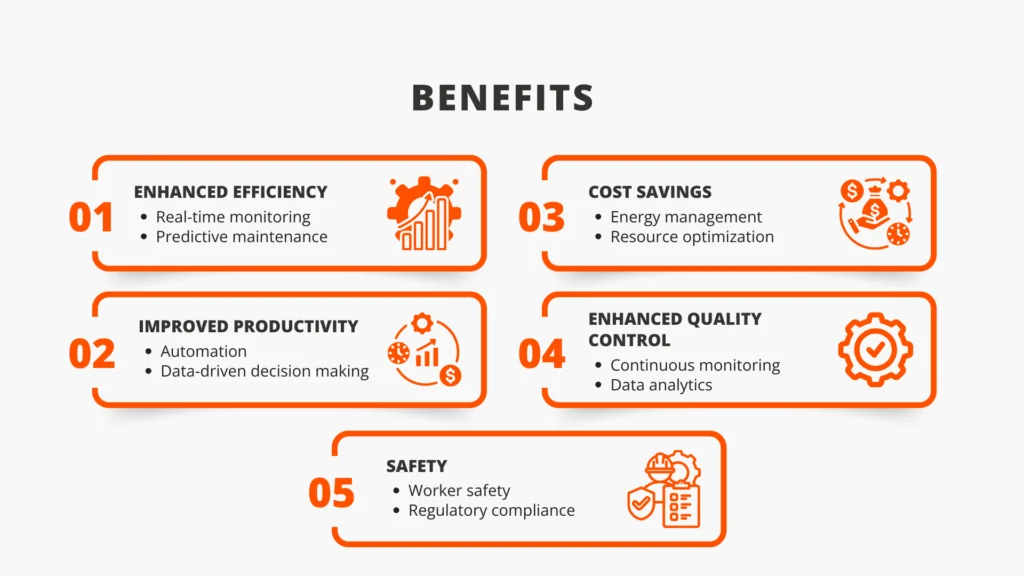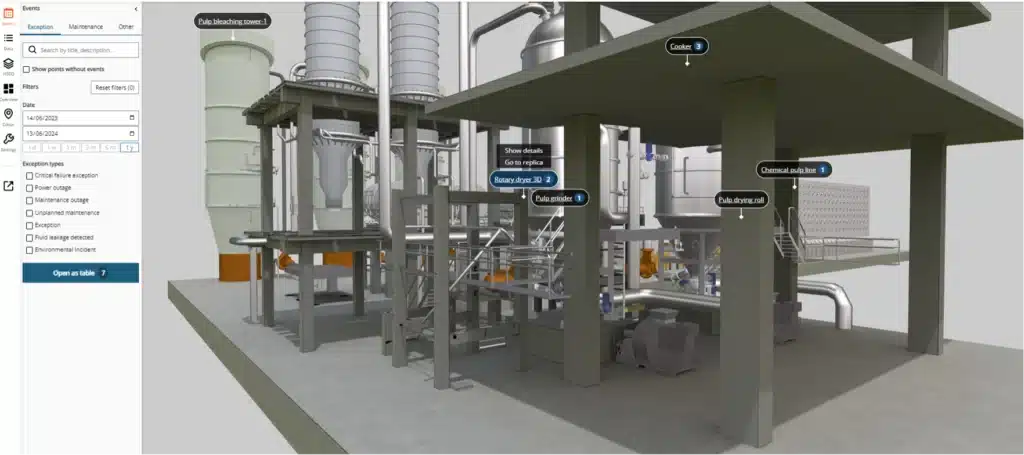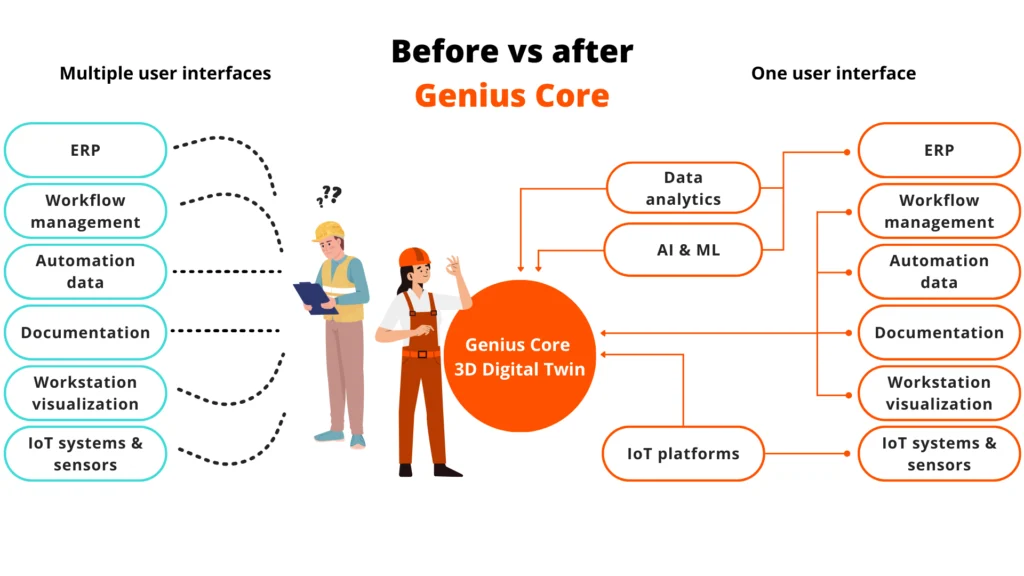Next level of data management: IoT and Digital Twin to overcome the data noise
In today’s fast-paced manufacturing world, staying ahead of the competition requires smart, efficient, and connected solutions. That’s where IoT (Internet of Things) platforms come in. They play a vital role in transforming the manufacturing industry.

What is IoT and IoT platform?
The Internet of Things (IoT) refers to a network of physical devices, vehicles, appliances, and other physical objects embedded with sensors, software, and network connectivity, allowing them to collect and share data [1].
An IoT platform is a suite of integrated software capabilities designed to support and manage IoT devices and applications. These platforms provide a comprehensive infrastructure to facilitate the connection, management, and analysis of data from IoT devices, enabling organizations to leverage the full potential of IoT technology.
What types of IoT exist?
IoT covers a huge variety of devices, from smart home gadgets like thermostats and wearables to industrial systems like connected machinery and predictive maintenance tools. It extends to healthcare devices, smart city infrastructure, agricultural sensors, retail automation, and connected vehicles, enhancing efficiency and connectivity across all sectors.

Nowadays, there are a huge number of companies that offer IoT platforms. Some of the biggest ones include:
- AWS IoT: Provides a suite of services and tools to connect IoT devices to the cloud, manage them, and analyze data.
- Microsoft Azure IoT: Offers a range of IoT solutions, including device management, data analytics, and integration with other Azure services.
- Google Cloud IoT: Provides a robust infrastructure for connecting, managing, and analyzing data from IoT devices, integrated with Google Cloud’s other services.
- IBM Watson IoT: Focuses on advanced analytics and AI capabilities, providing insights from IoT data.
- Siemens MindSphere: A cloud-based, open IoT operating system that connects products, plants, systems, and machines, enabling businesses to harness the wealth of data generated by the IoT.
Despite the wide variety of IoT applications, we are primarily interested in the use of IoT in the industrial sector.
The benefits of IoT in manufacturing

There are several benefits of IoT such as:
- Monitors equipment and processes in real-time.
- Provides instant alerts to prevent major issues and reduce downtime.
- Predicts maintenance needs, saving money on repairs.
- Automates routine tasks, boosting productivity and speeding up production.
- Helps managers optimize processes and improve efficiency with real-time data.
- Cuts energy costs by monitoring usage and managing inventory to reduce waste.
- Ensures product quality by detecting defects early and analyzing data for continuous improvement.
- Enhances safety by alerting workers to hazards.
- Helps with regulatory compliance through detailed records.
- Leads to cost savings, increased productivity, and improved safety and quality.
Development trend in IoT solutions
The Internet of Things (IoT) has evolved significantly since its early days. The first internet-connected device appeared in the early 1980s—a Coca-Cola vending machine at Carnegie Mellon University that reported its inventory. In 1990, John Romkey created an internet-controlled toaster. The term “Internet of Things” was coined in 1999 by Kevin Ashton, a British technology pioneer.
“Since then, IoT and IoT platforms have been revolutionizing the manufacturing industry by making operations smarter, more efficient, and cost-effective. However, there has been a recent increase in demand for Digital Twin technology. There are two scenarios: one where the Digital Twin works in close connection with the IoT platform, using its data, and another where it enables the user to integrate data from IoT devices directly into the platform.”
Challenges for manufacturers, brought by growing amount of data
The proliferation of smartphones and advancements in wireless technology have further fueled the growth of IoT, making it an integral part of modern technology across various sectors, including the industrial sector. However, it’s not only IoT that has evolved; other systems involved in the digitalization of production, such as ERP, MES, and SCADA, have also advanced over the decades. Technologies like ML, AI, and XR are being actively implemented.
In other words, decision-makers at different levels, be it maintenance specialists, production engineers, or CEOs, are faced with a multitude of systems and the challenge of finding and using relevant information amidst massive amounts of “data noise.” To address this challenge, we have created a multifunctional and scalable 3D Digital Twin solution. This solution maximizes the benefits offered by various production control and monitoring systems, including IoT solutions.
Genius Core 3D Digital Twin is developed to overcome data noise
Genius Core 3D Digital Twin lets users upload their own 2D or 3D models of their production plant to show key details about the work environment and production using “Point of Interest” markers. A Point of Interest (POI) is a visual indicator or a mark used within our digital twin platform. This marker serves to draw attention to specific points or objects within the environment that are of particular interest or significance. These markers can be, for example, safety and recycling points, production lines, and individual machines within your factory.
The platform’s functionality allows for the integration of data from sensors or other data systems, linking data to a specific POI and bringing a new level of data management.

Users can organize the POIs and configure the way data is visualized in the platfrom with just one click. They can restrict the information they see to only that which is necessary to their particular role by selecting the data type. These types can be utilization rate or OEE, or data related to HSEQ such as locations of fire extinguishers, waste collection areas, and emergency exits.
This level of data visualization also brings efficiency to the display of information as such. A picture tells a thousand words. For example, the location of the event can be seen directly from the surrounding image or, for example, as color-enhanced status information, where the red color highlights a value/information that you should pay attention to.
Digital Twin offers a single, unified visual data layer
As the amount of information and information sources increase, the need to highlight core information grows exponentially. In complex environments, more and more often, 3D visualization is the most efficient way to bring clarity to the clear and coherent appearance of distributed system data.
Our 3D Digital Twin shows the information on a role-based basis, so that each employee gets the events and information related to their work in real time in a unified digital layer. This way, a maintenance engineer will only see the data, events, and maintenance notifications relevant to the machines in their area of their responsibility.
It is no longer necessary to go to the control room or the production machine itself to see the OEE or the temperature level in the active part of the production machine. As we say, “Have a factory in your pocket!”
According to our calculations the manufacturing company with factories located in different countries and continents could save about 20,000 euros per year on the costs of traveling for investigation and monitoring control alone.

The takeaway
In summary, the integration of IoT platforms and Digital Twin technology is revolutionizing the manufacturing industry. By monitoring equipment and processes in real-time, predicting maintenance needs, and automating routine tasks, IoT enhances productivity, efficiency, and safety. The proliferation of smart devices and advanced technologies like AI and ML further drives this transformation. However, with the increasing amount of data, manufacturers face the challenge of managing and utilizing this information effectively.
Process Genius addresses this challenge with its Genius Core 3D Digital Twin solution. By allowing users to visualize and manage data through customizable 2D and 3D models, this platform helps streamline operations and improve decision-making. Key features like Point of Interest markers and role-based data visualization ensure that relevant information is easily accessible and actionable. This not only enhances operational efficiency but also leads to significant cost savings.
Embracing IoT and Digital Twin technology enables manufacturers to stay competitive in today’s fast-paced industry, ensuring smarter, more efficient, and sustainable operations. As technology continues to evolve, these innovations will play a crucial role in shaping the future of manufacturing.
Sources:
- [1] IBM. What is the Internet of Things (IoT)? Retrieved from https://www.ibm.com/topics/internet-of-things (read 19 June 2024).
Process Genius has created a Digital Twin platform that enables easy interaction between humans and data in industrial settings. Founded in 2012 and headquartered in Joensuu, Finland, the company’s solution tackles the challenge of individuals working in manufacturing and process industries having too many systems and data sources to handle. Process Genius solves this factory-level challenge by gathering data from different sources into a detailed, browser-based 3D twin of the factory that fits in your pocket. The Digital Twin is also utilized in specialized machine and equipment sales and premises management applications.
Thousands of Process Genius’ clients’ machines are connected to the 3D Digital Twin and are provided with complete situational awareness 24/7. The company has 35+ employees and has clients operating in several EU countries. For more information, visit processgenius.eu or follow us on LinkedIn.